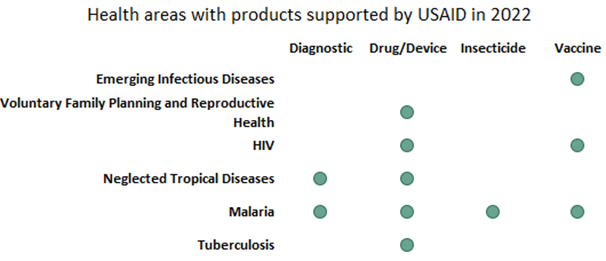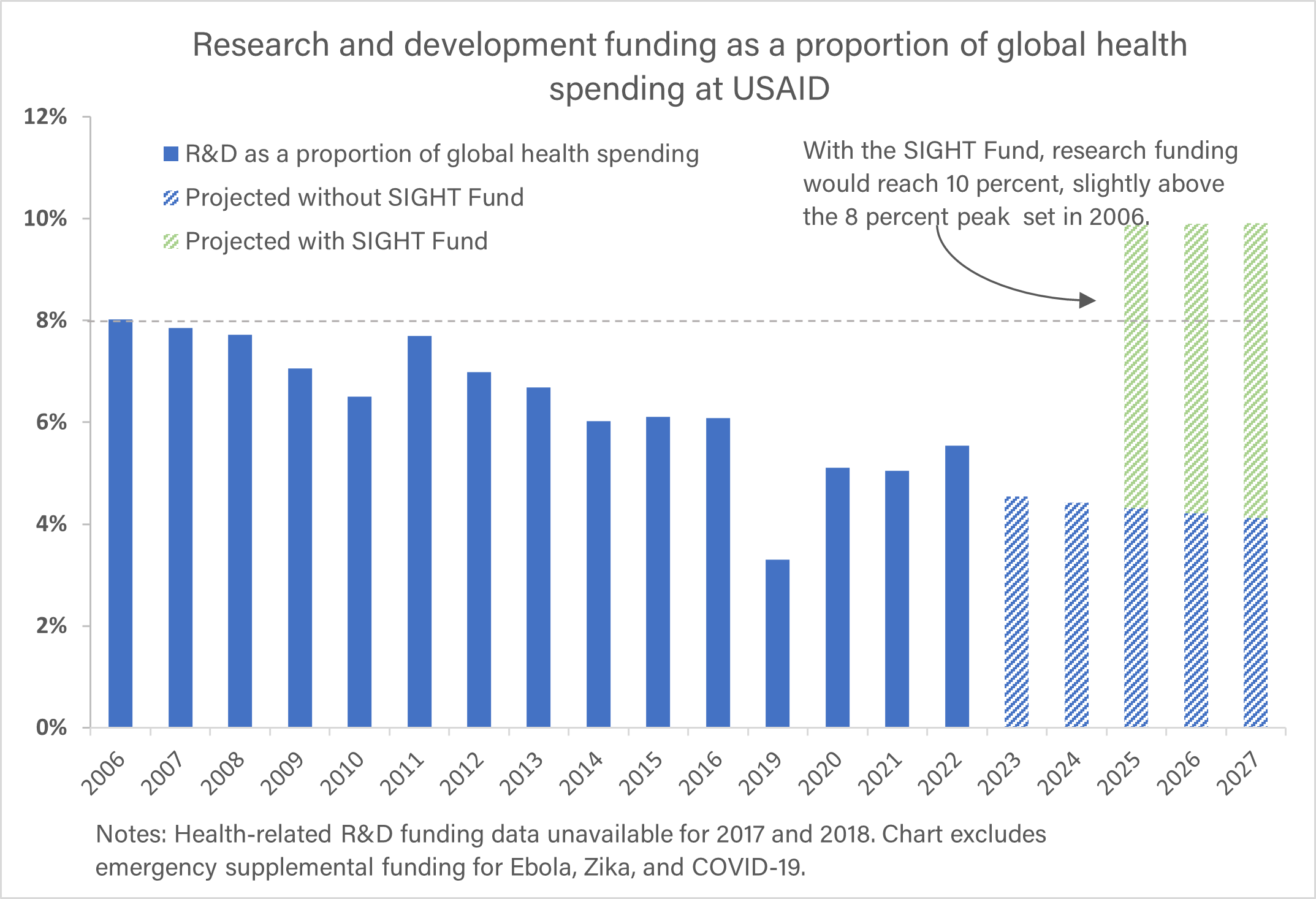Earlier this year, the US Agency for International Development (USAID) released its latest legislatively mandated report to Congress on its global health research and development (R&D) programs for fiscal year 2023. The report, which was recently shared with global health stakeholders following an October townhall with USAID Assistant Administrator for Global Health Dr. Atul Gawande, provides detailed information on individual products supported by the agency and key research advances in 2022, as well as budgeted funding for R&D across health areas.
Because of USAID’s unique role as a key sponsor of global health product development, the Global Health Technologies Coalition (GHTC) closely tracks these annual reports to catalog the agency’s investments in its research pipeline and technological advances for low-resource settings.
What has changed from last year?
The most recent report, which comes on the heels of the agency’s new Global Health Research and Development Strategy 2023–2028, shows an increase from fiscal year 2021 (FY21) to fiscal year 2022 (FY22) in both products supported by the agency and budget allocated to advancing new lines of research and partnerships.
The repeat details that the agency supported at least 63 individual products via its R&D investments in 2022, up 4 from 2021. Not surprisingly, the agency’s R&D portfolio in 2022 looked similar to 2021 in terms of the core health areas and product types financed.

The report also revealed that in 2022, USAID budgeted $214 million in total baseline (non-supplemental) funding for global health R&D projects. This represents an increase of roughly $49 million from 2021, with the lion’s share coming from a plus up via the Global Health Security line for the Coalition for Epidemic Preparedness Innovations (CEPI), from $4 million in FY21 to $55 million in FY22.
It is worth noting that in FY21, USAID allocated $50 million in COVID-19 supplemental funding from the American Rescue Plan Act for Global Health Security R&D. Thus, with supplemental funds included, FY21 funding numbers were more on par with FY22. This leads us to speculate that the supplemental increase in FY21 funds laid the groundwork for successfully justifying an increase in FY22 base funding for global health security-related R&D.
While the $214 million budgeted for R&D in 2022 represents the highest non-inflation-adjusted baseline funding for R&D ever reported by the agency since 2006 (when R&D spending is viewed as a proportion of total USAID global health spending), the picture that emerges is far less rosy. While proportional spending on R&D rose slightly by 0.4 percent from FY21, bringing it to 5.5 percent—this was still far below the 8 percent peak that the agency spent on R&D in 2006 and unfortunately does not fundamentally shift the trajectory of the years-long decline in proportional R&D spending by the agency.

The path ahead
While GHTC is pleased to see the increase in base funding for global health R&D and R&D spending as a proportion of overall global health funding, as GHTC’s analysis indicates, there are still core gaps in the agency’s R&D investment areas and a need to better resource the global health R&D portfolio after years of decreased proportional investment since 2006.
GHTC has been advocating for the creation of a new disease-agnostic fund for global health R&D at USAID, deemed the Supporting Innovative Global Health Technologies (SIGHT) Fund, to direct more dedicated resources to R&D. Earlier this month, we welcomed the first step towards that vision, with the House introduction of the bipartisan SIGHT Act (H.R. 6424), which would establish the programmatic structure at USAID for such a fund to be realized. We look forward to advancing the SIGHT Act, as well as what similar calls for greater investment in global health R&D spending can do for advancing health and well-being in all settings.


